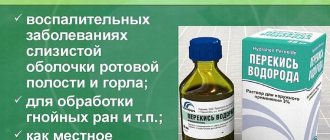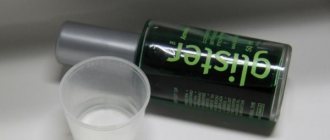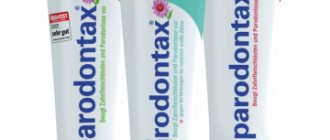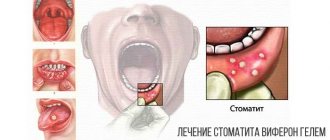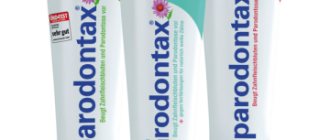Lidocaine is an effective pain reliever. Local anesthetics inhibit the ionic currents involved in the formation of the irritant, due to which the analgesic effect is achieved. Lidocaine stabilizes neuronal membranes, suppresses nerve conduction, and reduces the degree of depolarization.
When is lidocaine indicated?
The range of indications for Lidocaine solution includes the following conditions:
- Local anesthesia required for manipulations in ophthalmology, ENT practice, dentistry, and surgery.
- The use of cephalosporin group of antibacterial drugs as a solvent, the administration of which is characterized by a pronounced pain effect.
Lidocaine for injection allows you to anesthetize the desired area of skin or mucous membrane for several hours, which will be enough for medical manipulation accompanied by increased sensitivity.
Compound
The solution for intravenous administration includes the active component lidocaine hydrochloride (monohydrate form).
An additional component is water for injection. The active component included in the injection solution is also lidocaine hydrochloride (monohydrate form), additional components are sodium chloride, water.
Spray 10% for topical use contains lidocaine , as well as additional components: propylene glycol, peppermint oil, 96% ethanol.
Eye drops contain lidocaine hydrochloride , as well as benzethonium chloride, sodium chloride, and water.
The gel for external use also contains a similar active substance.
How is lidocaine solution used?
The local anesthetic solution is pre-tested on a separate area of the skin, which makes it possible to assess the presence or absence of an individual negative reaction to the drug.
The dosage of lidocaine solution depends on the type of anesthesia:
- Terminal type of anesthesia involves local application of a solution (2 mg per kg of body weight), maximum 20 ml for an adult patient. The effect lasts no more than 30 minutes.
- Conduction type of anesthesia. The dosage depends on the size of the area that needs to be anesthetized. Maximum dose 20 ml.
- In ophthalmology, the solution is instilled into the conjunctival sac.
- Epidural anesthesia – 22-30 ml of solution.
- Pain relief in obstetrics and gynecology – 20-30 ml of solution.
- In childhood, the dosage is determined individually (on average 3.5-4 mg per kg of weight).
To prevent the development of side effects, the solution must be administered strictly in recommended dosages. The medication Lidocaine, the instructions for use of which contains all the necessary dosages, must be prescribed after a detailed study of the anamnesis.
Lidocaine release form
The product is available in different forms:
- The solution, which is administered intravenously, is colorless and odorless. The solution is poured into ampoules of 2 ml, 5 pcs. in blister strip packaging. Two such packages are placed in a cardboard pack.
- The solution intended for injection is odorless and colorless, it is bottled in ampoules of 2 ml, in blister packs - 5 such ampoules. A solution of 10%, 2%, 1% is available.
- Spray with lidocaine 10 percent is a colorless alcohol solution that has a menthol aroma. Contained in bottles (650 doses), it is equipped with a special pump and spray nozzle. The bottle is placed in a cardboard box.
- Eye drops 2% are colorless and odorless, but sometimes they may be slightly colored. Contained in 5 ml polyethylene bottles.
- A gel is also available.
Adverse reactions
If used incorrectly, adverse reactions may occur:
- Dizziness, drowsiness, convulsions, sensory disturbances.
- Tinnitus.
- Changes in blood pressure, cardiac dysfunction.
- Nausea, vomiting.
- Feeling of heat, swelling at the injection site.
- Burning sensation, thrombophlebitis.
The list of adverse reactions is much wider, so it is necessary to monitor the patient’s condition after administration of the lidocaine solution.
Overdose
If an overdose is noted, the patient’s first signs of intoxication may be nausea , dizziness , vomiting , a feeling of euphoria , asthenia , and decreased blood pressure. Later, spasms of facial muscles develop, turning into spasms of skeletal muscles. The patient also has bradycardia , psychomotor agitation, collapse, and asystole . If an overdose occurs during childbirth, the newborn may develop bradycardia , apnea , and depression of the respiratory center .
In case of overdose, it is necessary to stop administering the drug and inhale oxygen. Next, symptomatic breathing is carried out. If seizures develop, 10 mg of diazepam should be administered. In case of bradycardia, the administration of m-anticholinergic blockers (atropine) and vasoconstrictors . Hemodialysis will be ineffective.
Contraindications to the use of lidocaine solution
The use of the drug is prohibited in patients with individual intolerance to the active substance. Lidocaine injections are also prohibited for use in the following conditions:
- The first few months after myocardial infarction.
- Severe cardiac pathologies with bradycardia.
- Infectious process at the injection site.
- Period of pregnancy, lactation.
- Children's age (up to 15 years).
- Convulsions due to epilepsy.
In these conditions, the use of lidocaine solution is not recommended.
Pharmacokinetics and pharmacodynamics
The highest concentration in the blood after intravenous administration is observed after 5-15 minutes, if the infusion is carried out slowly without a saturating initial dose, the maximum concentration is observed after 5-6 hours, and in people with acute myocardial infarction it can be achieved after a long time - up to 10 hours. Binds to plasma proteins by 50-80%. It is quickly distributed in the body and penetrates the placental and blood-brain barriers.
Metabolism mainly occurs in the liver; microsomal enzymes , resulting in the formation of active metabolites - glycine xylidide and monoethylglycine xylidide . People with liver disease have a slower metabolism. Excretion occurs in bile and urine.
If lidocaine cream or other agents are applied topically, absorption depends on the dose and also on the site where the lidocaine cream or gel is applied. Absorption is affected by the rate of perfusion in the mucosa.
There is good absorption in the respiratory tract, so care must be taken to prevent the administration of the drug in toxic doses.
After injections of lidocaine intramuscularly, almost complete absorption is noted. It is distributed quickly and binds to proteins, depending on the concentration of the active ingredient, by 60-80%.
The half-life depends on the dose administered, it is 1-2 hours.
If an aerosol is used, its effect appears within 1 minute and lasts 1-2 minutes. There is a gradual disappearance of the achieved decrease in sensitivity over 15 minutes.
Interaction of the solution with other drugs
Lidocaine is not recommended to be combined with the following groups of drugs at the same time:
- Analgesics of the narcotic group - threatens respiratory depression.
- Anticoagulants – increases the risk of bleeding.
- Cardiac glycosides – their effectiveness decreases.
- Novocaine group – increases muscle relaxation.
- The standard is a negative effect on respiratory function.
Lidocaine solution should be combined with extreme caution in diseases of the heart and nervous system, accompanied by systematic use of drugs.
Lidocaine in carpules -
All modern anesthetics have not been produced in ampoules for a very long time; they are produced in disposable capsules. The carpule already contains a dose of anesthetic; it is inserted into the carpule syringe (Fig. 1), then a disposable very thin needle is screwed on, and the syringe is ready for anesthesia.
Lidocaine carpule and carpule syringe:
An example of lidocaine anesthesia in carpules is the drug Xylonor, produced by the French company Septadont. But carpules with lidocaine are also produced by other companies. To increase the duration and depth of anesthesia, in addition to lidocaine itself, the anesthetic carpules also contain special additives (epinephrine, adrenaline or norepinephrine), which constrict the blood vessels at the site of anesthesia, thereby preventing the rapid leaching of the anesthetic.
The use of carpule syringes and carpules greatly simplifies the administration of anesthesia for the doctor, and thanks to very thin needles, it reduces pain for the patient. Read all the most detailed information on modern anesthesia in our article: “Everything about anesthesia in dental practice”
special instructions
Lidocaine injection should only be done under the supervision of a physician. Treatment should be carried out under ECG control.
Before starting treatment, it is recommended to examine the level of potassium in the blood, since if its content is reduced, the effectiveness of the drug decreases.
The drug has an effect on the central nervous system, so it is not recommended to drive or engage in potentially life-threatening activities while using it.
Careful monitoring is required for patients prone to seizures, as even small doses may enhance the convulsive effect.
It is necessary to combine lidocaine with caution with those drugs that increase its bioavailability or slow down its elimination, which can be especially dangerous in case of end-stage renal failure.
With intramuscular administration of lidocaine solution, increased activity of creatine phosphokinase may be observed, which prevents the diagnosis of myocardial infarction.
Rapid administration of lidocaine solution can lead to a sharp decrease in blood pressure, with the possibility of collapse. In this case, the toxic effect of the drug with its cardiotoxic effect should also be considered.
pharmachologic effect
Lidocaine - what is it?
Wikipedia indicates that lidocaine is a derivative of acetanilide in chemical structure. It has a pronounced antiarrhythmic and local anesthetic effect.
The pharmacological group to which the active substance belongs is local anesthetics .
Inhibits nerve conduction by blocking sodium channels in nerve fibers and nerve endings, thereby providing a local anesthetic effect.
If we compare the anesthetic effect of procaine , then lidocaine is 2-6 times superior to it. Also, its effects develop faster and last longer. How long the drug lasts depends on the interaction with other drugs. If the drug is used simultaneously with Epinephrine , then the effect lasts more than 2 hours. When applied topically, vasodilation is observed, but no local irritating effect is noted.
In the body, it stabilizes the cell membrane, blocks sodium channels, increases the level of membrane permeability for potassium ions, which determines its antiarrhythmic effect .
Under its influence, repolarization in the ventricles is accelerated, the fourth phase of depolarization in Purkinje fibers is inhibited, without affecting the electrophysiological state of the atria.
It does not have a significant effect on myocardial contractility and conductivity. The negative inotropic effect is slightly pronounced, it manifests itself for a short time and only if the drug is administered in large doses.
Lidocaine during pregnancy and lactation -
Lidocaine cannot be used as a local anesthetic during pregnancy. However, lidocaine spray can be used, because in the doses used, it does not pose a danger to the fetus. During lactation, the drug should not be prescribed either in the form of a spray or for local anesthesia.
The safest drug for pregnant and lactating women is Ultracaine “DS” (instructions for the drug).
Lidocaine: contraindications for use
- allergy to lidocaine components,
- significant impairment of liver function,
- sick sinus syndrome,
- 2-3 degree atrioventricular block,
- severe bradycardia,
- myasthenia gravis, cardiogenic shock.
Sources:
1. Higher prof. the author's education in surgical dentistry, 2. Based on personal experience as a dental surgeon, 3. National Library of Medicine (USA), 4. “Local anesthesia in dentistry” (Baart J.), 5. “Propaedeutics of surgical dentistry” (Soloviev M.).



